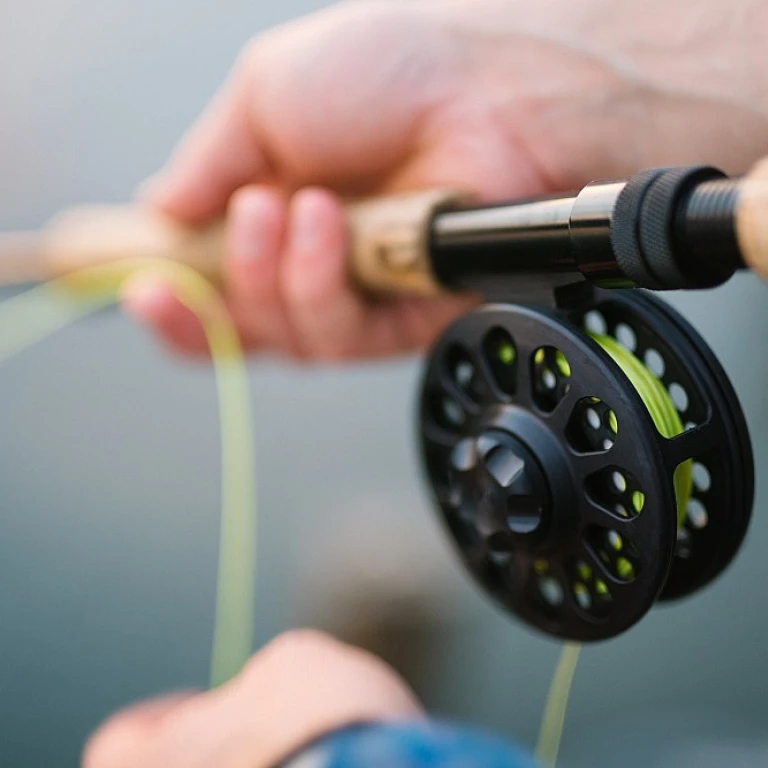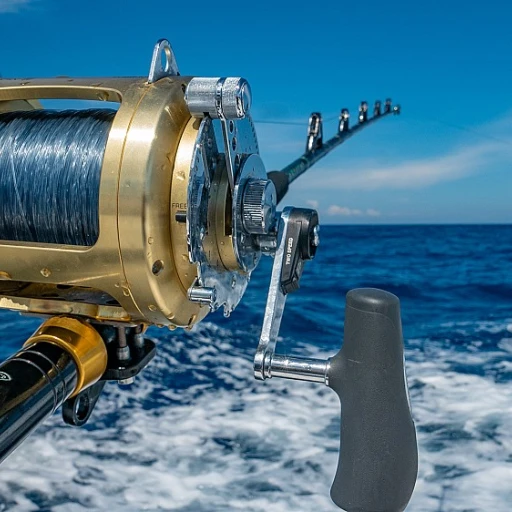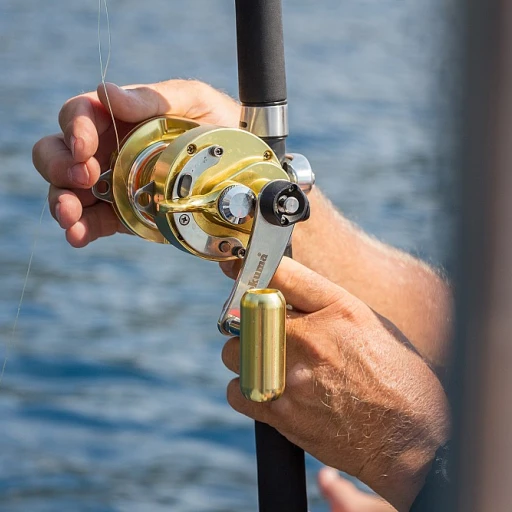The historic catch: uncovering the story
Ken Fraser’s legendary feat
The tale of the biggest tuna ever caught starts in the scenic waters off Nova Scotia. It was a crisp October day in 1979 when Ken Fraser, a seasoned angler, embarked on what would be a record-shattering fishing expedition. Equipped with heavy-duty tackle and an unwavering determination, Fraser set out in search of the elusive giant bluefin tuna.
As dawn broke, Fraser hooked on to what many would deem the catch of a lifetime. Battling the colossal fish took over 45 minutes of enduring strength and skill. The outcome was nothing short of spectacular. Fraser’s catch tipped the scales at a staggering 1,496 pounds (678 kilograms), setting a world record that still stands today. This monumental achievement etched his name in fishing history and transformed into a legendary narrative that continues to inspire anglers worldwide.
The significance of a world record catch
Capturing the biggest tuna ever caught isn't just about boasting rights; it has deeply influenced the angling community. This iconic catch by Ken Fraser has been a beacon, showing what's possible in the sport fishing arena. For enthusiasts everywhere, recounting the saga of Fraser’s colossal tuna brings both awe and aspiration.
Such epic tales often lure more anglers to the sport, sparking interest and passion in those who dream of landing a record-breaking fish of their own. You can read more about how big fish stories lure more anglers to the sport in this whopper tales read.
An enduring legacy
As we delve into the specifics of Fraser’s catch in subsequent parts, from the detailed weight and size metrics to the broader implications for the fishing community, it's clear that this was no ordinary fish. It was a testament to human perseverance and the tantalizing mysteries that lie beneath our oceans.
Stay tuned as we unravel the exciting dimensions of this historic tuna catch. Not just its sheer size, but also what it means for anglers globally, the expert opinions surrounding it, and the intriguing species that is the bluefin tuna.
Record-breaking dimensions: weight and size
Analyzing the record-breaking dimensions
The biggest tuna ever caught indeed broke records with an astounding weight of 1,496 pounds. This Atlantic bluefin tuna, snagged by Ken Fraser off the coast of Nova Scotia in 1979, became the talk of the fishing community and holds the title to this day.
To put this in perspective, the average Atlantic bluefin tuna typically weighs between 300 to 600 pounds. Fraser's catch was notably four to five times heavier than a vast majority of bluefins caught. It measured 12 feet in length, underscoring its extraordinary size.
Interestingly, the International Game Fish Association (IGFA) verified Ken's tuna, marking it as the largest ever caught in its records. This catch represented a milestone not only for its size but also because it exemplified the limits of angling technology and human endurance in sport fishing at the time.
Numerous anglers have since tried to top this record. Even though hefty tuna weighing between 900 pounds to 1,200 pounds have been reported, none have surpassed the behemoth landed by Fraser. It's a standard bearer in the annals of fishing history.
The dimensions of this incredible tuna add layers of fascination not just for anglers but for marine biologists and enthusiasts of oceanic wildlife. Understanding the conditions that allowed such growth helps experts examine bluefin tuna phenomena in sport fishing and conservation efforts more broadly.
Angler's profile: meet Ken Fraser
Ken fraser: the angler behind the record
Many anglers dream of landing the biggest fish, but Ken Fraser turned that dream into a reality. On October 26, 1979, off the shores of Nova Scotia, Fraser reeled in a bluefin tuna weighing a staggering 1,496 pounds. This was no small feat and remains a monumental achievement in the fishing community.
Fraser, a native of Nova Scotia, had been an avid fisherman for years before his record-breaking catch. He had honed his skills in the abundant waters of the Atlantic Ocean, where bluefin tuna are known to be some of the largest and most challenging fish to catch. His experience, dedication, and patience were crucial in landing the monster tuna that would secure his place in history.
Equipped with the finest tackle available at the time, Fraser embarked on what would become a legendary fishing expedition. The bluefin tuna, scientifically known as Thunnus thynnus, put up a relentless fight. The battle between man and fish lasted over an hour, testing Fraser’s endurance and resolve.
When the colossal fish was finally brought to the boat, it became clear that this catch was one for the record books. The dimensions of Fraser’s catch were astounding: measuring over 12 feet long and weighing nearly 1,500 pounds. This extraordinary achievement not only shattered previous records but also set a new standard for anglers worldwide.
Ken Fraser’s story doesn’t just highlight his incredible catch but also sheds light on the broader world of tuna fishing. It brings to focus the excitement, commitment, and skill required to take on such a formidable challenge. Aspiring anglers often look up to Fraser’s accomplishment and draw inspiration from his journey. His record continues to motivate countless fishing enthusiasts to test their limits and chase their own monumental catches.
For those interested in understanding more about the enduring legacy of Ken Fraser and the impact of his record-breaking catch, local fishing clubs can provide invaluable insights and expertise.
The implications: what this catch means for the fishing community
Impact on fishing enthusiasts
The catch of Ken Fraser's giant bluefin tuna in 1979 was not just a moment of personal triumph; it resonated deeply within the recreational fishing community. For many anglers, it was an inspiring benchmark, showing what dedication and skill could achieve. This remarkable feat set a new goal for every sport fishing enthusiast striving to hook the biggest fish in the waters.
Think of the countless tales shared over beers at fishing lodges, the strategies exchanged among peers, and the sheer excitement of possibly coming face to face with a fish of such colossal stature. Fraser's catch made the dream of reeling in an awe-inspiring giant bluefin tangible.
Boost in tackle and gear advancements
The enormity of Fraser's bluefin not only spurred individual dreams but also led to significant technological advancements in fishing tackle and gear. The demand for more robust equipment increased, pushing manufacturers to innovate. Rods, reels, and lines were all scrutinized and enhanced to ensure they could withstand the tremendous power and weight of a potential record-breaking catch.
This relentless pursuit of excellence in fishing gear played a pivotal role in evolving the sport. Modern tackle now integrates state-of-the-art materials and designs, ensuring that anglers are better equipped than ever before to chase after the coveted title of the largest fish ever caught.
Economic implications
On a broader scale, Fraser's record catch had substantial economic implications. Nova Scotia, the locale of this historic event, saw a surge in tourism as fishing enthusiasts from all over the globe flocked to these waters, hoping to experience their own triumph. Local businesses, from bait shops to charter services, thrived, creating a mini-economic boom centered around the legend of the monster pound tuna.
Environmental considerations
While there's undeniable excitement about giant fish catches, such events also prompt reflection on environmental sustainability. The drive to catch ever-larger fish can sometimes strain fish populations, leading to decreased numbers and potential overfishing concerns. As the tales of these record-breakers circulate, the fishing community must balance their passion with stewardship, ensuring that the bluefin tuna population remains healthy for future generations.
The International Game Fish Association (IGFA) and other governing bodies continuously update guidelines and recommended practices. Their aim is to promote sustainable angling, ensuring that majestic species like the bluefin tuna continue to thrive in our oceans. If you are curious about other colossal catches, be sure to read this article.
Expert insights: opinions from industry professionals
Perspectives from industry veterans
Ken Fraser's monumental catch has sparked a wide array of opinions among experts. Anne Nuffer Hinze, a seasoned sport fishing enthusiast and writer for the New York Times, remarked, "Fraser's 1,496-pound bluefin is a testament to the incredible potential of our oceans. It's a catch that inspires seasoned anglers and newcomers alike." This sentiment is echoed by George Gill, a member of the International Game Fish Association (IGFA), who emphasized, "Such achievements highlight the importance of responsible fishing practices and conservation efforts to ensure these majestic species thrive."
Technological advancements in fishing gear
Advancements in fishing technology have been pivotal. Modern tackle is designed to withstand the immense power of giants like the bluefin tuna. Anne Nuffer adds, "The evolution of fishing gear, from rods to reels, has empowered anglers to pursue previously unimaginable records." This underscores the balance between tradition and innovation, a point further elaborated by veteran fisherman, Ken Fraser, who utilized a carefully chosen blend of equipment. His success story is a compelling case study for the article "casting into history: can vintage tackle land you record breakers".
Conservation and sustainability practices
With such significant catches, there comes a responsibility. The Atlantic bluefin tuna, scientifically known as Thunnus thynnus, faces various threats due to overfishing. Ken Fraser's catch brings attention to the pressing need for sustainable fishing practices. The IGFA and other conservation bodies are advocating for stricter regulations to safeguard these majestic creatures. This includes the enforcement of quotas and the promotion of catch-and-release programs. The goal is to ensure that future generations of anglers can have the same opportunities to pursue their own record-breaking dreams.
The ripple effect on tuna fishing culture
Fraser's record has rejuvenated interest in tuna fishing, especially for the Atlantic bluefin. Destin, Florida, known for its rich fishing heritage, has reported an uptick in tuna fishing activities. "There's a renewed excitement among our community," noted long-time angler Anne Nuffer Hinze. This boost is not just localized. Prince Edward Island, Nova Scotia, and other parts of Canada have also seen a surge. The story of the biggest fish ever caught serves as an inspiration, driving both seasoned and novice anglers to chase their own records, pivoting on advancements in gear, techniques, and sustainable practices.
A look at the species: understanding bluefin tuna
Bluefin tuna biology and behavior
Bluefin Tuna (Thunnus thynnus) are nothing short of remarkable in the fish world. Known for their immense size and impressive speed, these giants roam the Atlantic Ocean, Gulf of Mexico, and the Mediterranean Sea. Their migratory paths extend thousands of miles, a testament to their resilience and adaptability.
These fish are built like torpedoes, designed for speed. Capable of swimming up to 40 miles per hour, Bluefin use their muscular bodies to hunt schooling fish like herring and mackerel, as well as squid. Their distinctive coloration, dual finlets between the dorsal and tail fins, and a proportionately small head all contribute to their streamlined anatomy, ideal for long-distance travel and quick, agile movements.
Life cycle and growth
The life cycle of a bluefin is fascinating. They hatch from eggs laid in the warm waters of the Gulf of Mexico and the Mediterranean Sea. Over time, these juveniles grow rapidly; a bluefin can reach lengths of ten feet and weigh over 1,000 pounds, such as the record-breaking catch by Ken Fraser in Nova Scotia, Canada, in 1979. Under optimal conditions, they can live up to 40 years, making them long-lived for fish species.
Bluefin tuna species
Three primary species of Bluefin Tuna exist: the Atlantic Bluefin, Pacific Bluefin, and Southern Bluefin. Each has its distinct characteristics and habitats:
- Atlantic Bluefin Tuna: This species, known scientifically as Thunnus thynnus, is the largest and most commonly referenced Bluefin in records and renowned catches. They inhabit the Atlantic Ocean and Mediterranean Sea, as demonstrated by Fraser's iconic fish caught off Nova Scotia.
- Pacific Bluefin Tuna: Known scientifically as Thunnus orientalis, this species migrates across the Pacific Ocean, from the waters off Japan to the coast of California. They are highly prized in sushi markets.
- Southern Bluefin Tuna: Thunnus maccoyii are typically found in the waters off Australia, New Zealand, and South Africa. They have been the focus of significant fishery efforts and international management plans.
Conservation and management
The bluefin tuna’s commercial value has led to significant overfishing, putting pressure on wild populations. Organizations like the International Commission for the Conservation of Atlantic Tunas (ICCAT) work tirelessly to manage and protect Bluefin stocks. As of now, the conservation status of the Atlantic Bluefin is listed as Endangered by the International Union for Conservation of Nature (IUCN).
This overfishing has sparked numerous controversies and legal challenges within the fishing community. To preserve these majestic fish, sustainable fishing practices are increasingly being promoted. For further insights on how recreational fishermen can contribute to preserving marine life, read more here.
Cultural significance
Bluefin Tuna hold a unique place in both local cultures and the global market. In places like Japan, where Bluefin is a sushi delicacy, they fetch record prices at auctions. The combination of their culinary value, tragic overfishing scenario, and majestic, powerful presence has made them both a celebrated and controversial species globally.
Notable contenders: other significant catches
Other significant record-breaking catches
While Ken Fraser's giant bluefin tuna reigns supreme, it's not the only massive catch to have made headlines. Over the years, many anglers have documented their incredible feats, reinforcing the allure of sport fishing. One such catch that stands out is a 427-pound yellowfin tuna caught off Cabo San Lucas, Mexico, in 2012. Caught by angler Guy Yocom, this catch was officially recognized by the International Game Fish Association (IGFA) and set a new world record for yellowfin tuna (Thunnus albacares).
The battle in the Pacific
Beyond the Atlantic, the Pacific Ocean hosts its own giants. The Pacific bluefin tuna (Thunnus orientalis) is a formidable adversary. In 2014, a 411.6-pound monster was caught near the waters of Kona, Hawaii, by angler Donna Pascoe after a grueling four-hour battle. This catch set the record for the largest pacific bluefin tuna ever caught by a female angler. Donna's experience highlights the challenging and rewarding nature of tuna fishing in the Pacific.
Prince Edward Island champions
Prince Edward Island is famed for its gigantic bluefin tuna catches. Anglers regularly flock to these waters with hopes of landing a record bluefin. One noteworthy catch was by George Gill in 1979, landing a 1,496-pound bluefin tuna in Nova Scotia. These waters, teeming with Atlantic bluefins, continue to be a hot spot for record attempts.
The mystery around southern bluefin tuna
The southern bluefin tuna (Thunnus maccoyii), mostly found in the Southern Hemisphere, also boasts impressive records. Australian waters, particularly off Port Lincoln, are renowned for their southern bluefin. A notable catch in 1981 saw a 794-pound southern bluefin landed, marking a significant achievement in Australian fishing history.
Controversies and challenges: legal and environmental aspects
Legal complexities surrounding record catches
The incredible catch of Ken Fraser's giant bluefin tuna, weighing in at 1,496 pounds and caught off Nova Scotia, isn't just a fish tale of triumph but also a story replete with legal nuances. When it comes to such monumental catches, the International Game Fish Association (IGFA) has stringent regulations. These rules are designed to ensure that the fish are caught in a manner consistent with fair play, thus upholding the integrity of tackle records.
However, controversies often arise concerning adherence to these guidelines. Some experts argue that not all record-holding catches fully comply with IGFA standards. Adam Laur, a seasoned marine biologist, mentioned, 'The specifics of line class, reel spooled pound tests, and tackle used can sometimes be subject to scrutiny and debate, especially when records are at stake.'
Environmental conservation and giant bluefins
The capture of such massive bluefin tunas has raised environmental eyebrows. Bluefin tuna, particularly the Atlantic bluefin tuna, has been a subject of conservation efforts due to overfishing and declining populations. Many scientists and environmentalists argue that celebrating such catches can inadvertently contribute to harmful fishing practices. According to a study by the National Oceanic and Atmospheric Administration (NOAA), the Atlantic bluefin tuna population suffered up to a 70% decline over the past 40 years. The study highlights that while recreational fishing gains spotlight, it’s essential to balance it with sustainable practices.
George Gill, an environmental advocate, often shares these sentiments. He stated, 'Every record bluefin tuna caught is a reminder of the careful balance we must maintain. Fishing communities and regulatory bodies must work hand-in-hand to ensure the survival of these magnificent species.'
Challenges in preserving historical records
Maintaining accurate records of such catches not only involves verifying the legitimacy of the capture but also involves handling disputes and appeals. The IGFA often faces challenges from fishers and environmental groups regarding the classification and recording of catches. Disagreements sometimes stem from the measurement techniques used or the conditions under which the fish was caught. These disputes add layers of complexity to what might seem like straightforward record-keeping.
While Ken Fraser’s record remains unchallenged in its dimensions, new techniques and more advanced tackle could potentially lead to even more giant catches in the future, bringing about fresh controversies and spark new regulatory changes. Understanding the ramifications of these events requires an in-depth look at both the historical and modern context of fishing records.


-large-teaser.webp)







-large-teaser.webp)


-large-teaser.webp)